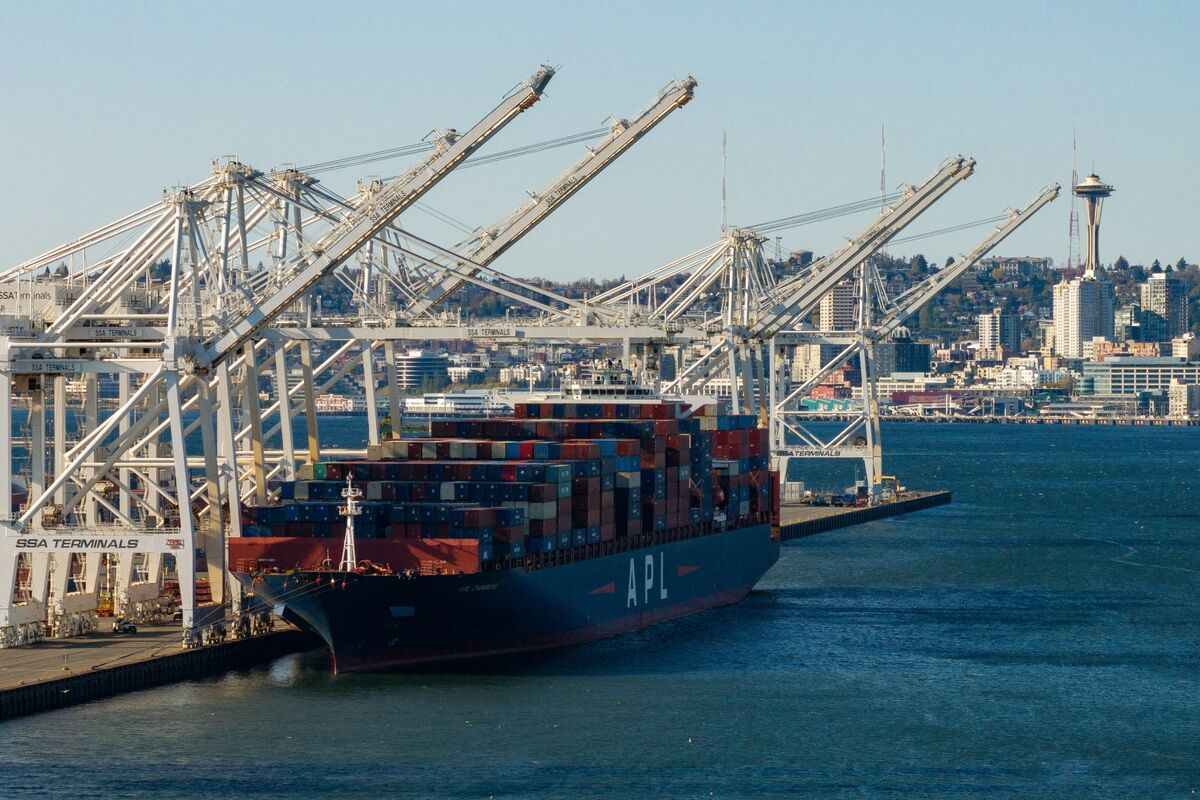Trump Tariffs: Unpacking the Global Economic Fallout
Editor's Note: The lasting impact of the Trump-era tariffs continues to be debated. This article explores the multifaceted consequences of these trade policies on the global economy.
1. Why This Topic Matters
The Trump administration's imposition of tariffs on goods from China and other countries sent shockwaves through the global economy. While proponents argued the tariffs would protect American industries and jobs, critics warned of retaliatory measures, trade wars, and broader economic disruption. Understanding the long-term effects of these policies is crucial for navigating current economic uncertainties and preventing similar situations in the future. This article delves into the complex interplay of factors, examining both the intended and unintended consequences of these trade actions. Key areas we will explore include the impact on specific industries, the role of global supply chains, and the broader implications for international trade relations.
2. Key Takeaways
| Impact Area | Key Finding |
|---|---|
| Consumer Prices | Increased costs for consumers due to higher import prices. |
| Global Trade | Disruption of established trade patterns and increased trade tensions. |
| Manufacturing | Shifting production locations and potential job losses in tariff-affected sectors. |
| International Relations | Strained relationships between major trading partners. |
| Economic Growth | Reduced global economic growth due to decreased trade and investment. |
3. Main Content
3.1 Trump Tariffs: A Deep Dive
The Trump administration implemented tariffs on a wide range of goods, primarily targeting China. These tariffs, ranging from 10% to 25%, covered various products, from steel and aluminum to consumer electronics and agricultural goods. The stated goal was to protect American industries from unfair competition and to encourage domestic manufacturing. However, the reality proved far more complex.
Key Aspects:
- Retaliatory Tariffs: China and other affected countries responded with their own tariffs, creating a tit-for-tat trade war that significantly disrupted global supply chains.
- Increased Prices: Tariffs directly increased the cost of imported goods, leading to higher prices for consumers in the US and globally.
- Supply Chain Disruptions: Companies faced challenges in sourcing materials and components, leading to production delays and increased costs.
- Investment Uncertainty: The uncertainty surrounding trade policy discouraged investment and hindered economic growth.
3.2 Interactive Elements on Trump Tariffs
The impact of Trump tariffs was not uniform across sectors or countries. Some industries, like agriculture, were disproportionately affected by retaliatory tariffs. Others, like the steel industry, experienced some short-term benefits, but faced longer-term challenges due to global supply chain disruptions. The "interactive" element here comes from the understanding that the impact varied greatly based on specific factors, making a generalized assessment insufficient.
Facets:
- Sector-Specific Impacts: Analyzing individual sectors (e.g., agriculture, manufacturing, technology) reveals varying levels of vulnerability.
- Geopolitical Ramifications: The tariffs exacerbated existing geopolitical tensions and shaped international trade relationships.
- Long-Term Economic Effects: The sustained impact on growth, inflation, and investment requires ongoing analysis.
3.3 Advanced Insights on Trump Tariffs
Recent research suggests that the long-term economic consequences of the Trump tariffs may be more significant than initially anticipated. Studies have shown a negative impact on global trade, reduced economic growth, and increased inflation. Furthermore, the disruption of supply chains has led to increased volatility and uncertainty in the global economy.
Further Analysis:
- Quantitative Studies: Econometric models provide numerical estimates of the tariffs' impact on various economic variables.
- Qualitative Studies: Case studies highlight the specific challenges faced by businesses and workers in tariff-affected industries.
- Expert Opinions: Economists and trade experts offer diverse perspectives on the long-term implications.
4. People Also Ask (NLP-Friendly Answers)
Q1: What is the main impact of Trump tariffs? A: The main impact was a disruption to global trade, leading to higher prices for consumers, increased trade tensions, and supply chain disruptions.
Q2: Why were the Trump tariffs implemented? A: The stated goal was to protect American industries from unfair competition and encourage domestic manufacturing.
Q3: How did other countries respond to Trump tariffs? A: Many countries imposed retaliatory tariffs, escalating the trade tensions and leading to a trade war.
Q4: What are the long-term effects of Trump tariffs? A: Long-term effects include decreased global economic growth, increased inflation, and lasting damage to international trade relationships.
Q5: How can businesses mitigate the risks of future trade wars? A: Businesses can diversify their supply chains, explore new markets, and advocate for predictable and stable trade policies.
5. Practical Tips for Navigating Trade Uncertainty
Introduction: Understanding the complexities of international trade is crucial for businesses operating in a globalized world.
Tips:
- Diversify Supply Chains: Reduce dependence on single suppliers or countries.
- Invest in Risk Management: Develop strategies to mitigate trade-related risks.
- Monitor Trade Policies: Stay informed about changes in trade regulations and policies.
- Build Strong Relationships: Cultivate relationships with suppliers and customers in diverse markets.
- Embrace Technological Advancements: Utilize technology to enhance efficiency and resilience in supply chains.
- Advocate for Free Trade: Support policies that promote open and fair international trade.
- Seek Expert Advice: Consult with trade lawyers and economists to navigate complex trade issues.
Summary: The Trump-era tariffs served as a stark reminder of the interconnectedness of the global economy and the significant consequences of protectionist trade policies. Understanding these consequences is vital for policymakers and businesses alike to build more resilient and sustainable trade relationships.
6. Call to Action
Ready to dive deeper? Subscribe for more insights on global trade and economic policy!

